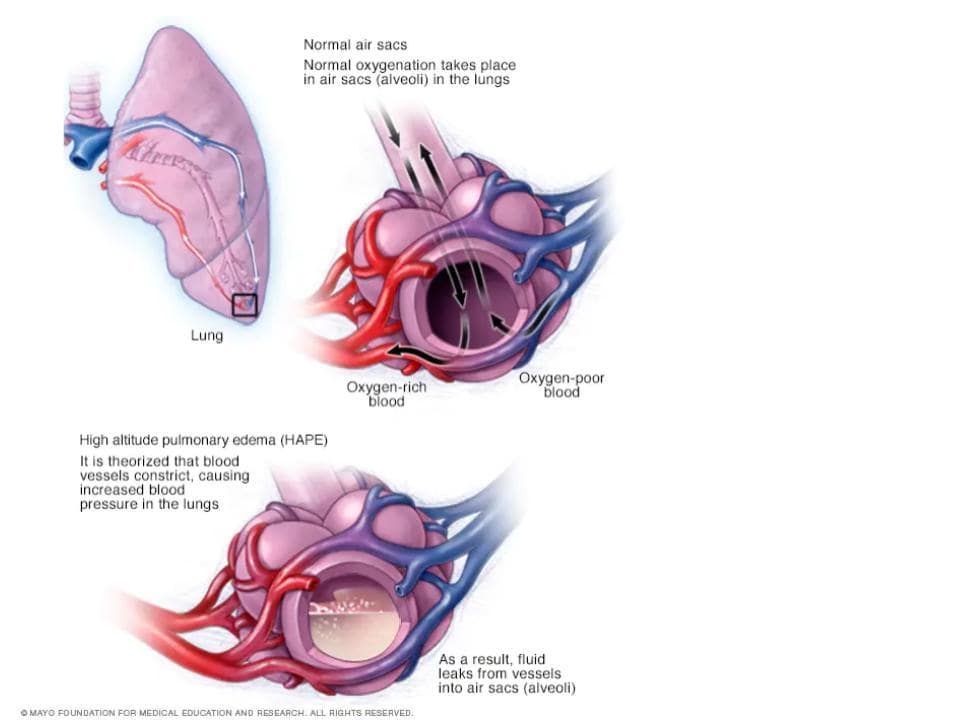
Should someone traveling in the higher elevation areas be concerned about HAPE? It is an uncommon occurrence for most people while in the mountains, but it can happen. Here’s how it can happen and how to avoid it.
HAPE can be described as an accumulation of fluid in the lungs from an abrupt increase in elevation for those that are not acclimated. This typically occurs above 8,200 ft (2,500 m) for healthy individuals. The lower air pressure at higher elevations makes oxygenation of blood increasingly difficult. Blood that is not properly oxygenated is called hypoxemia. Hypoxemia essentially causes vasoconstriction of arteries that supply lung tissue with oxygen. This vasoconstriction causes the cells that make up the lining of the blood vessels to leak into the alveoli of the lungs. Alveoli is where gas exchange occurs, and this fluid impedes the gas exchange.
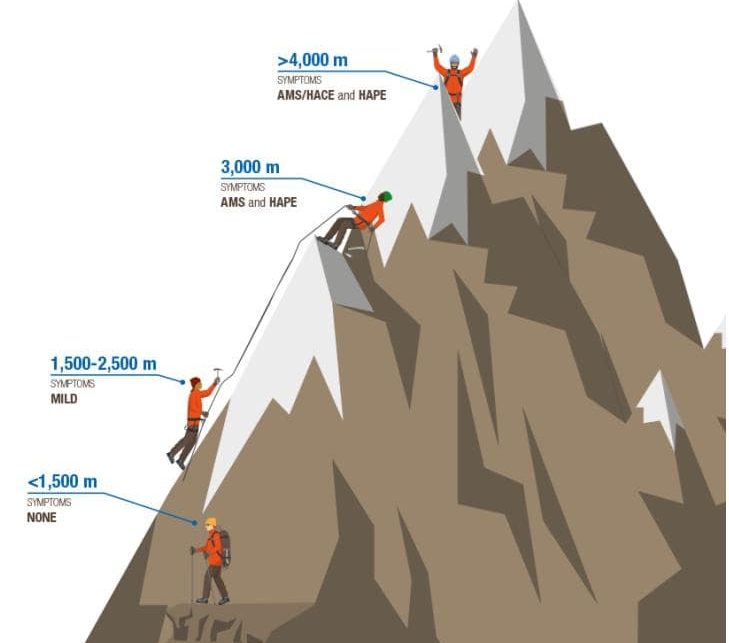
This most commonly occurs after 24 hours of being above 8,200 ft (2,500 m) for those that aren’t acclimated. Some early symptoms are shortness of breath, a decrease in athletic performance, increased time of recovery, weakness, and fatigue, especially when walking uphill. If symptoms are not treated it can lead to one’s lips turning blue from the decreased gas exchange, pink and frothy sputum, poor coordination, and altered consciousness. In these more extreme cases, a person should descend as quickly as possible. Symptoms have been shown to improve when descending as little as 500-1,000 ft (150- 300m). Supplemental oxygen can be administered to keep SpO2 levels above 90%, instead of descending.
Realistically the chances of developing this condition on that next big adventure are low. A study reports 1-10,000 skiers who visit Colorado at moderate altitudes develop HAPE. Generally, 0.2-6 percent of people at 14,800 ft (4,500 m) and 2-15 percent of people at 18,000 ft (5,500 m) will experience symptoms of HAPE. However, to be on the safe side the Wilderness Medical Society recommends that climbers above 9,800 ft (3,000 m) should not sleep at an elevation of 1,600 ft higher than the night before, and every 3-4 days do not ascend sleeping elevation. In other words, gain altitude gradually.
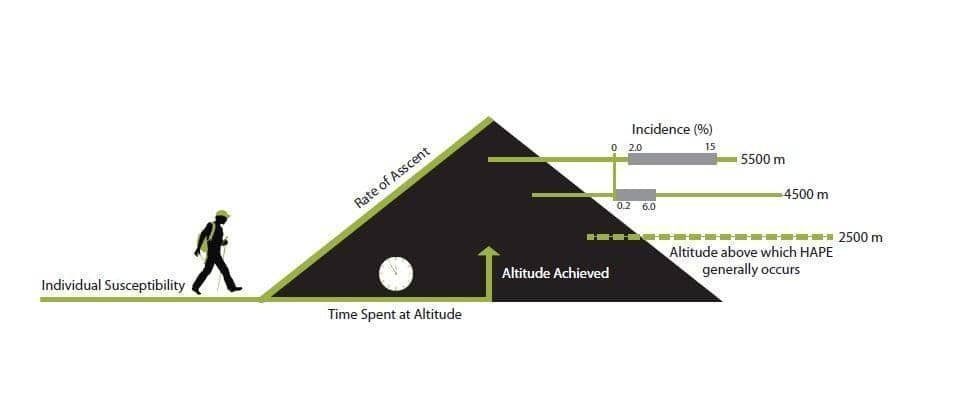
Assessing for symptoms, understanding how to act if symptoms arise, and knowing how to avoid HAPE are crucial skills for safety and having the most fun at higher altitudes!

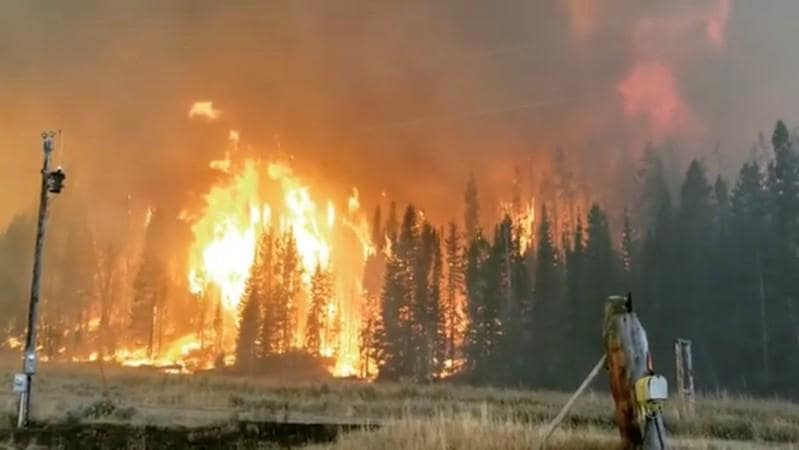

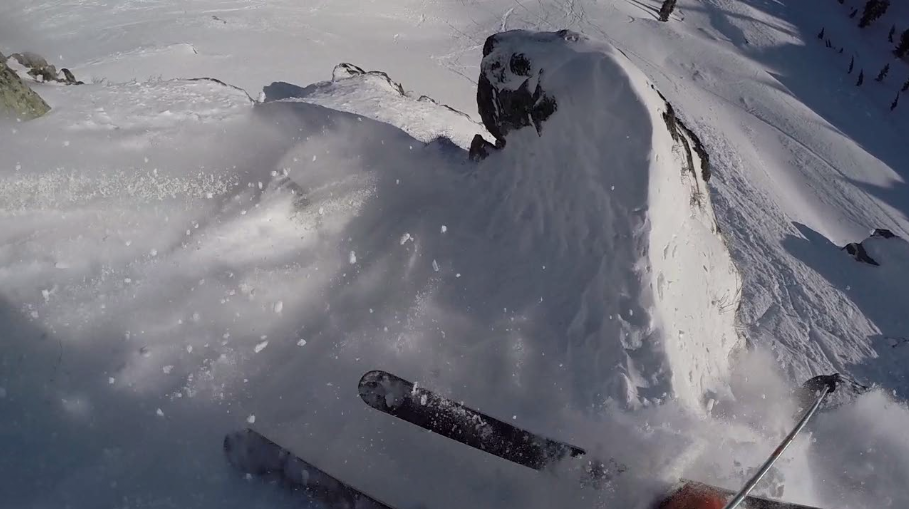
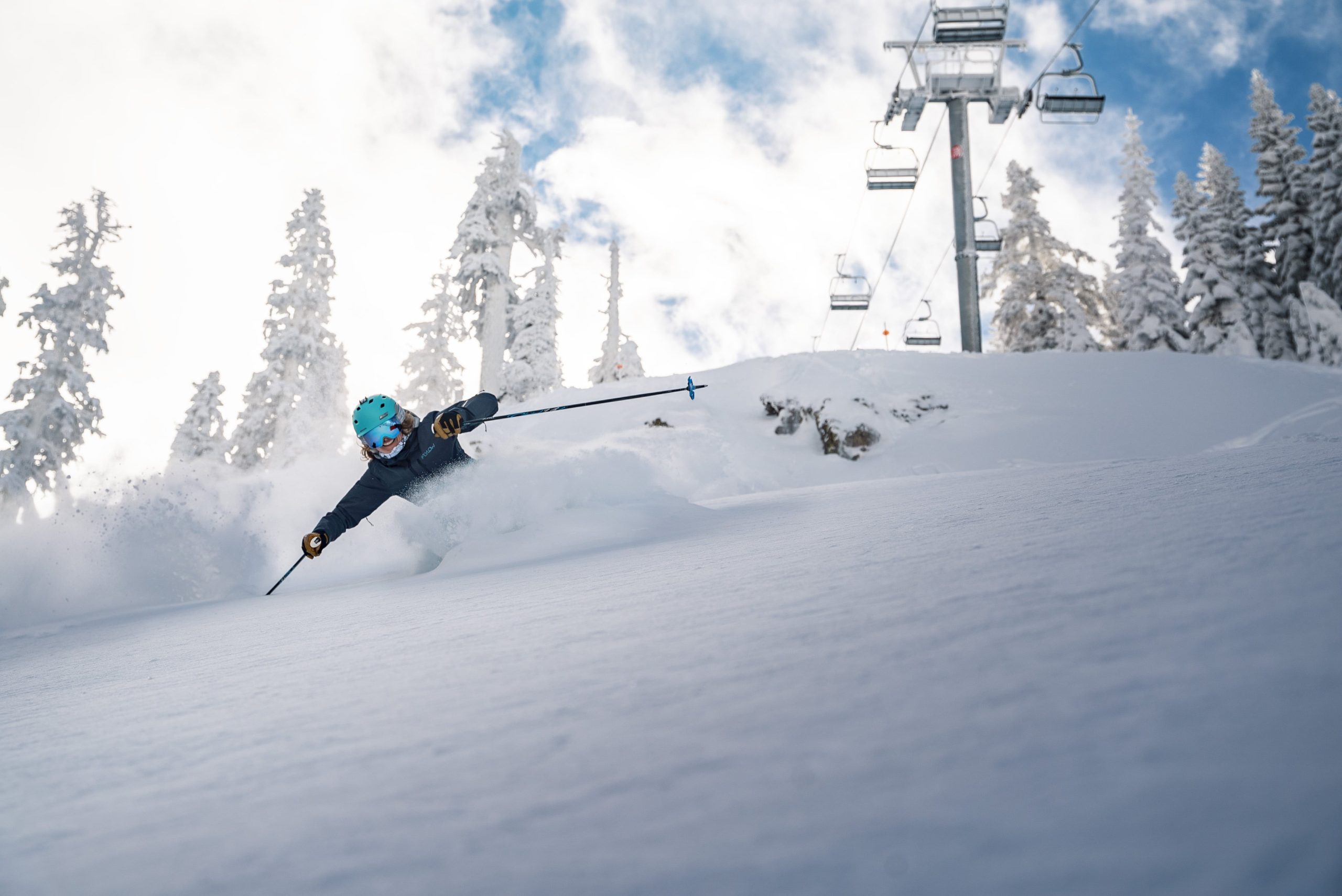
I read this article five times before I fully appreciated its content. This article appears to be thoroughly researched and strongly based upon medical facts. The three air sac pictures are very informative and strongly support the content of the article.